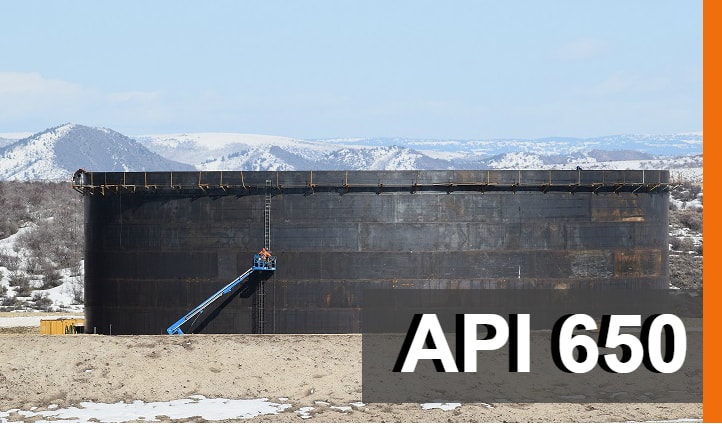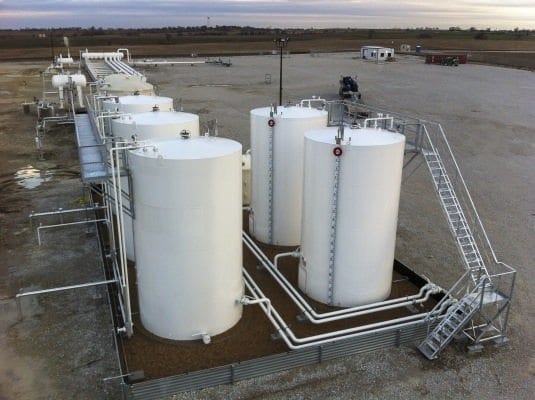How Welding Evaluation Works: A Comprehensive Guide for Professionals
Welding examination plays an essential duty in ensuring the safety and reliability of bonded structures. It involves a systematic strategy that includes both visual inspection and progressed screening methods. Experts should acquaint themselves with key criteria and guidelines regulating the market. Comprehending the usual issues that can occur throughout welding is essential. This overview will certainly discover these aspects carefully, supplying understandings right into the processes that maintain high quality and honesty in welding.
Understanding the Importance of Welding Assessment
While numerous might undervalue the importance of welding evaluation, it plays a crucial duty in making certain the honesty and security of welded structures. Effective welding examination identifies prospective flaws and flaws that can endanger architectural strength and result in catastrophic failures. The inspection process includes various techniques, such as aesthetic examinations, ultrasonic testing, and radiographic assessments, each adding to the total analysis of weld high quality.
In addition to safeguarding the architectural integrity, welding assessment ensures compliance with industry requirements and client specs. By making certain that welds fulfill called for attributes and tolerances, examinations aid maintain the dependability and long life of components in numerous applications, from building and construction to aerospace. An extensive examination process cultivates a society of high quality and accountability amongst manufacturers and welders. Eventually, welding examination is not just a procedural step; it is a critical technique that underpins the safety and security and performance of engineered systems throughout diverse sectors.
Secret Specifications and Laws in Welding Evaluation
The foundation of efficient welding examination hinges on adherence to established guidelines and criteria. Different organizations, such as the American Welding Society (AWS) and the American National Specification Institute (ANSI), established forth guidelines that ensure quality and safety in welding practices. Secret requirements, such as AWS D1.1 for architectural welding and ASME Section IX for pressure vessels, give detailed standards for welding qualifications, inspections, and treatments. Regulatory structures, including those from the Occupational Safety and Health Management (OSHA), required security techniques and worker protections in welding environments. Conformity with these standards is vital for accomplishing consistent weld quality and reducing the threat of failures. Furthermore, international standards like ISO 3834 better enhance international uniformity in welding inspection methods. Professionals should stay informed about these regulations to ensure that their examination techniques line up with market expectations and lawful requirements, consequently guarding both employees and architectural integrity.
First Prep Work and Visual Examination Techniques

Reliable welding examination begins with a comprehensive pre-inspection list that assures all needed problems are satisfied before the actual evaluation occurs. Following this preparation, visual problem identification plays an important function in examining weld top quality, allowing inspectors to detect concerns such as cracks or incorrect combination. Together, these techniques develop the foundation for a successful welding evaluation process.
Pre-Inspection List
Before starting any kind of welding evaluation, a detailed pre-inspection list is important to ensure that all required prep work are completed which visual assessment methods are efficiently employed. Trick components of this checklist include verifying the welding treatment requirements (WPS), ensuring all tools is calibrated and in great functioning problem, and confirming that the examiner has the needed certifications. Additionally, it is crucial to review any previous assessment reports and to analyze the work environment for safety and security hazards. The inspector must additionally verify that all relevant documentation, such as material certifications and examination records, is easily available. Finishing this list assists to establish a strong structure for an effective assessment procedure, boosting the reliability of the outcomes acquired.
Visual Flaw Identification
A successful aesthetic issue recognition process starts with mindful first preparation and the application of well established aesthetic inspection methods. Assessors need to ensure that the welding location is clean and well-lit, as adequate exposure is important for identifying problems. A complete assessment of the weld joint's surface enables the recognition of gaps, such as fractures, damages, or porosity. Assessors typically utilize devices like magnifying glasses or mirrors to boost their sight of hard-to-reach areas. Furthermore, they ought to recognize with the particular welding criteria and standards pertinent to the project. By adhering to these approaches, examiners can effectively determine potential concerns, guarding the integrity of the weld and compliance with market requirements.
Non-Destructive Screening Methods: A Summary
Non-destructive screening (NDT) methods play a necessary duty in the welding evaluation procedure by making certain the stability and reliability of bonded frameworks without causing any damage (API 650 Welding Inspection). These methods allow inspectors to evaluate the quality of welds while protecting the elements being examined. Common NDT methods include ultrasonic screening, radiographic screening, magnetic particle testing, and color penetrant screening, each offering distinct benefits
Ultrasonic testing utilizes high-frequency sound waves to discover internal problems, while radiographic testing makes use of X-rays or gamma rays to envision the interior structure of welds. Magnetic bit testing discloses surface area and near-surface flaws by applying a magnetic area and iron bits to the weld area. Color penetrant testing highlights surface-breaking imperfections through the application of a colored dye. With each other, these NDT methods offer vital insights right into weld high quality, allowing professionals to make enlightened decisions relating to safety and security and compliance in welding applications.
Usual Issues and Their Effects
Determining common issues in bonded joints is crucial for preserving architectural integrity and security. Various problems can occur throughout the welding procedure, each lugging possible ramifications for the general performance of the framework. Porosity, defined by small gas pockets within the weld, can weaken the joint and endanger its load-bearing capability. Cracks might develop due to thermal stress or inappropriate air conditioning, causing potential failing under anxiety. Incomplete fusion occurs when the weld steel does not fully bond with the base product, resulting in weak joints that might not endure desired tons. Undercutting, where the base steel is eroded, can additionally decrease the reliable cross-section of the weld. Furthermore, extreme reinforcement can create tension concentrations that can cause failing. Acknowledging these issues immediately permits restorative steps, ensuring the longevity and integrity of bonded frameworks in vital applications.
Devices and Devices Made Use Of in Welding Examination
Efficient welding examination relies upon a selection of specialized tools and devices to ensure the top quality and integrity of welded joints. Crucial instruments consist of aesthetic evaluation tools, such as amplifying borescopes and glasses, which allow examiners to closely take a look at more welds for surface area defects. Non-destructive testing (NDT) techniques, such as ultrasonic screening, radiographic screening, and magnetic fragment screening, are fundamental for determining interior imperfections without harming the product.
Measurement tools, including calipers and weld evaluates, assist ascertain and assess dimensions compliance with requirements. In addition, hardness testers evaluate the mechanical buildings of welded joints. Individual safety tools (PPE) is additionally important, protecting the security of assessors while functioning in possibly harmful atmospheres (API 650 Welding Inspection). Each device serves a particular function, collectively enhancing the performance of welding examination and adding to the integrity of finished projects
Regularly Asked Inquiries
What Credentials Are Required to End Up Being a Welding Inspector?
To become a welding assessor, people commonly require pertinent qualifications, such as AWS CWI or CSWIP, in addition to experience in welding processes, design principles, and knowledge of inspection strategies, security standards, and applicable codes.
Just How Commonly Should Welding Inspections Be Carried Out?
Welding evaluations should be performed on a regular basis, preferably at different project phases, consisting of pre-weld, during-weld, and post-weld. Frequency might likewise rely on market standards, task specs, and the intricacy of the welds entailed.
Can Welding Defects Be Repaired After Inspection?

Yes, welding defects can commonly be repaired after evaluation. Relying on the severity basics and sort of defect, suitable approaches such as revamping or additional welding may be utilized to recover architectural integrity and security conformity.
What Industries Require Normal Welding Inspections?

Numerous sectors, including construction, manufacturing, aerospace, and auto, require regular welding evaluations - API 650 Welding Inspection. These assessments assure adherence to safety and security criteria and quality assurance, reducing threats associated with architectural integrity and functional efficiency in bonded parts
Just how Do I Pick a Welding Evaluation Service?
To select a welding assessment solution, one need to take into consideration qualifications, experience, accreditations, and market online reputation. Additionally, assessing client testimonials and ensuring the service fulfills appropriate criteria can help assure high quality inspections and reputable results.

While many may ignore the significance of welding examination, it plays a vital role in making sure the integrity and security of bonded structures. Secret criteria, such as AWS D1.1 for structural welding and ASME Area IX for stress vessels, offer thorough requirements for welding credentials, procedures, and assessments. Effective welding inspection begins with a thorough pre-inspection checklist that ensures all essential problems are fulfilled before the actual evaluation takes area. Prior to starting any welding evaluation, a complete pre-inspection list is crucial to guarantee that all required preparations are completed Extra resources and that visual evaluation methods are successfully used. Non-destructive screening (NDT) approaches play a crucial function in the welding inspection process by guaranteeing the honesty and dependability of welded frameworks without creating any type of damage.